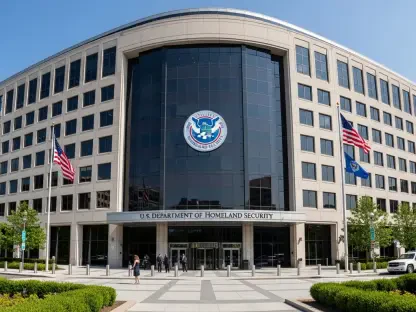As devastating floods sweep through central Vietnam, we turn to Dr. Donald Gainsborough, a renowned meteorologist and climate expert, for insight into this unprecedented natural disaster. With decades of experience studying weather patterns in Southeast Asia, Dr. Gainsborough offers a deep understanding of the forces behind these record-breaking rains and their far-reaching impacts. In this interview, we explore the severity of the flooding in historic areas like Hue and Hoi An, the challenges faced by communities and infrastructure, the role of climate change in intensifying such events, and what lies ahead for the region.
Can you walk us through the scale of the recent flooding in central Vietnam and which areas are bearing the brunt of it?
Absolutely. The flooding in central Vietnam right now is historic, driven by some of the heaviest rainfall ever recorded in the region. The hardest-hit areas are Hue, a former imperial capital and UNESCO World Heritage site, and Hoi An, another iconic tourist destination known for its ancient architecture. These areas have seen extreme deluges, with Hue recording over 1,000 millimeters—about 39 inches—of rain in just 24 hours. That’s a staggering amount, smashing national records and overwhelming local rivers and drainage systems.
What makes the rainfall in Hue so significant, and how does it stack up against historical data?
The rainfall in Hue is a benchmark event. According to Vietnam’s National Center for Hydro-Meteorological Forecasting, this 24-hour total is the highest since record-keeping began in the country. To put it in perspective, water levels in the Huong and Bo rivers, which run through Hue, hit 5.25 meters—over 17 feet—on Monday, surpassing the previous high from 2020. This isn’t just a heavy rainstorm; it’s a once-in-a-lifetime event that highlights how extreme weather is becoming more frequent and intense.
Can you paint a picture of the current conditions in Hue, especially regarding its historic landmarks?
Hue is still in a dire state as of Tuesday morning. Despite some receding water levels, much of the city remains submerged under more than a meter—about 3.3 feet—of murky water. This includes culturally significant areas like the palace grounds, which are part of Hue’s UNESCO designation. Images coming out of the city show a haunting scene of ancient structures partially underwater. Local authorities are working around the clock to manage the crisis, but they’ve warned that rain and flooding could persist until Friday, prolonging the threat to both residents and heritage sites.
How are other regions like Hoi An and Quang Ngai province coping with these extreme conditions?
Hoi An is also grappling with severe flooding from the same heavy rains, with widespread inundation damaging homes, businesses, and its historic streets. The situation in Quang Ngai province is equally alarming, where a massive landslide of red mud, stretching nearly two miles, has isolated around 1,700 people. Rescue and relief efforts are underway in both areas, but the scale of the disaster is making it tough to reach everyone quickly. The focus right now is on ensuring safety and providing essentials to those cut off by the floods and landslides.
What kind of toll is this taking on local communities across the affected provinces?
The human impact is heartbreaking. Over 8,600 people have been evacuated from four central provinces due to the risks of flooding and landslides. Power outages are widespread, affecting more than 306,000 households and businesses in Hue, Danang, and Quang Tri. While specific numbers on injuries or fatalities tied directly to this event are still emerging, the disruption to daily life is immense. People are losing homes, livelihoods, and access to basic services, and the emotional toll of such a disaster can’t be understated.
How has this flooding disrupted transportation and infrastructure in the region?
The impact on infrastructure is massive. Vietnam Railways Corp has had to suspend services between Hanoi and Ho Chi Minh City, a critical route connecting the country’s capital to its business hub, due to flooding along the tracks. Beyond that, roads are impassable in many areas, isolating communities and hampering relief efforts. Daily life has ground to a halt for many, with travel disruptions adding another layer of difficulty to an already catastrophic situation.
What are scientists and officials saying about the reasons behind these increasingly severe storms?
Scientists are clear that storms and rainfall are becoming more powerful due to the warming of the planet from human-induced climate change. Warmer air holds more moisture, leading to heavier downpours, and rising sea levels exacerbate flooding in coastal areas like central Vietnam. Officials are also noting that this event follows closely on the heels of Typhoon Bualoi, which struck in September, showing a pattern of more frequent and intense weather events that the region is struggling to adapt to.
Looking at the bigger picture, how does climate change play a role in events like this flooding?
Climate change is a major driver here. It’s not just about one storm or one flood; it’s about a trend of escalating extremes. Vietnam has always faced monsoon rains and typhoons, but the intensity and frequency we’re seeing now are on a different level. Data shows natural disasters in the country caused 187 deaths or missing persons in the first nine months of this year alone, with economic losses over $610 million. These numbers reflect a reality where warming temperatures amplify weather systems, and vulnerable regions like central Vietnam bear the heaviest burden.
What do officials predict for the duration of this crisis in central Vietnam?
Authorities are bracing for a prolonged event. In Hue, they’ve indicated that rain and flooding could continue until at least Friday, which means more days of hardship for residents and more strain on response efforts. The forecast depends on how weather systems evolve over the next few days, but with the ground already saturated, even moderate rain could worsen the situation. It’s a critical time for preparation and resilience.
What is your forecast for the future of weather-related challenges in regions like Vietnam?
Looking ahead, I’m deeply concerned but also hopeful. Vietnam and similar regions are likely to face more frequent and severe weather events as climate change progresses. We’re talking stronger typhoons, heavier rains, and longer flood seasons unless global emissions are curbed significantly. My forecast is that adaptation—through better infrastructure, early warning systems, and community preparedness—will be just as crucial as mitigation efforts. The challenge is immense, but with the right policies and international support, Vietnam can build resilience against what’s coming.









